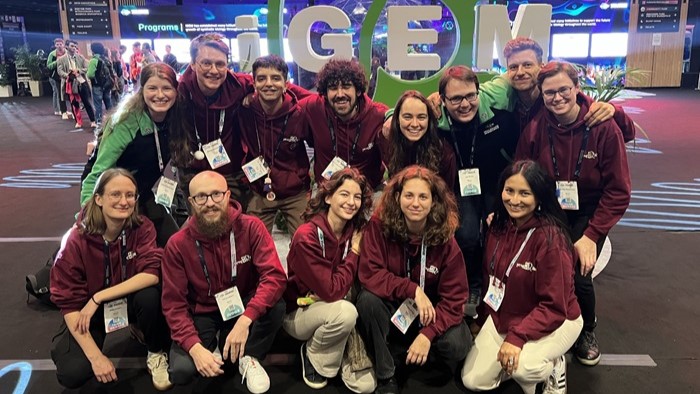Exchanging ideas, presenting results
Over 400 teams from across the globe convene in Paris to showcase the outcomes of their year-long projects. The iGEM Munich team is made up of students from various disciplines, including molecular biology, bioinformatics, and medicine, representing the two leading universities in Munich, LMU and TUM. This year, the team also included students from the Elite Graduate Programs "Human Biology – Principles of Health and Disease" and "Responsibility in Science, Engineering, and Technology".
In 2024, iGEM Munich developed ProgRAM: Programmable RNA Access Memory. Our project aimed to give cells the ability to record events happening inside them, turning them into their own chronologists. However, most existing systems to date rely on DNA, the "hard drive" of the cell, which makes accessing and reading the recorded information both time-consuming and disruptive.
To overcome these challenges, we drew inspiration from how random access memory works in computers – allowing for rapid storage and retrieval of data. RNA, as the cell's messenger, could play a similar role in molecular recording. We used a dead Cas13b enzyme fused with an RNA deaminase domain (ADAR) to write on the RNA. Upon sensing a cellular event, a gRNA is expressed to guide the editing complex to its target. When on target, the ADAR domain catalyzes the deamination of adenosine to inosine within a synthetic recording tape. The de-amination process inactivates a start codon, causing a frameshift and triggering the expression of a reporter in one of three frames, depending on the recorded state. It creates a „traffic light system”, allowing monitoring the recorded state while preserving cell integrity.
iGEM is more than just the lab
But iGEM is much more than just wet lab and dry lab! Over the past year, we’ve worked hard to bring synthetic biology closer to the general public. Recognizing the growing influence of AI, we organized an interdisciplinary panel discussion on its future role in modern biology. Our educational outreach also included events like Girls' Day, iGEM@school, Bioinformatics Day, and the TUM and LMU Open Days, where we introduced 3D-printable puzzles explaining the central dogma of molecular biology.
In addition, we developed the iGEM Data Explorer, a custom AI-powered tool designed to make the vast scientific content in iGEM wikis more accessible and interactive. With over 4,470 wikis to explore, existing tools provide only surface-level details, missing the depth of work done by previous iGEM teams.
During our time at the Grand Jamboree in Paris, we had the opportunity to present our project to teams from around the world, as well as to experts from academia and industry, through two Live Stage Presentations and Booth sessions. We are proud to share that our efforts resulted in a Gold Medal and a nomination for the Best Software tool! Our journey could not have been possible without the support of our sponsors, which included the Elite Network of Bavaria.
You can find more details about ProgRAM on our wiki: https://2024.igem.wiki/munich/.
Text: Natalia Kuźmierkiewicz, Elite Graduate Program "Human Biology - Principles of Health and Disease"


